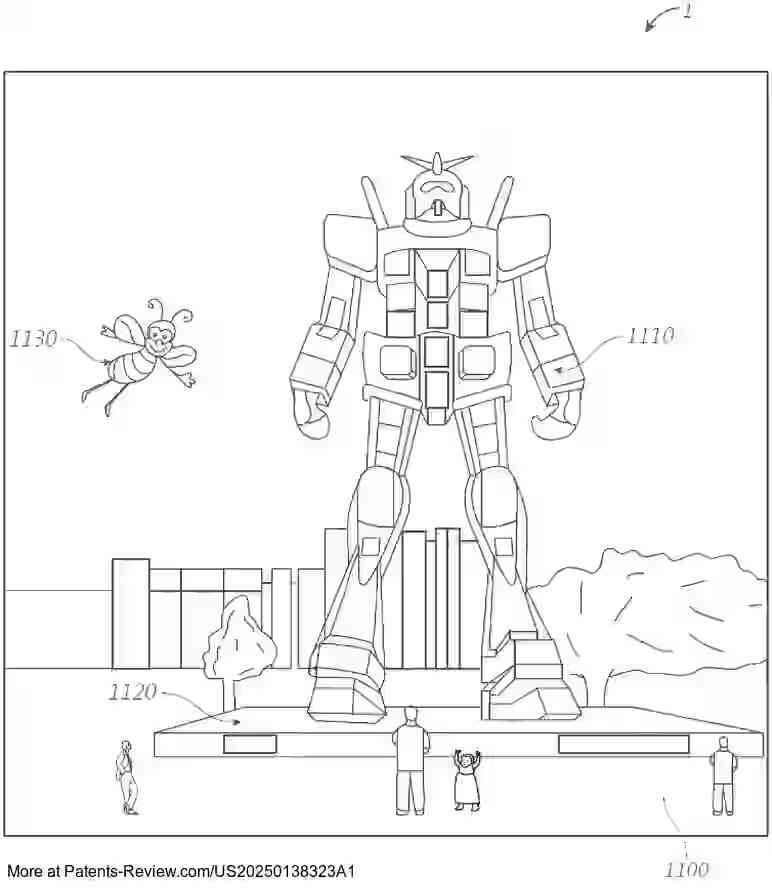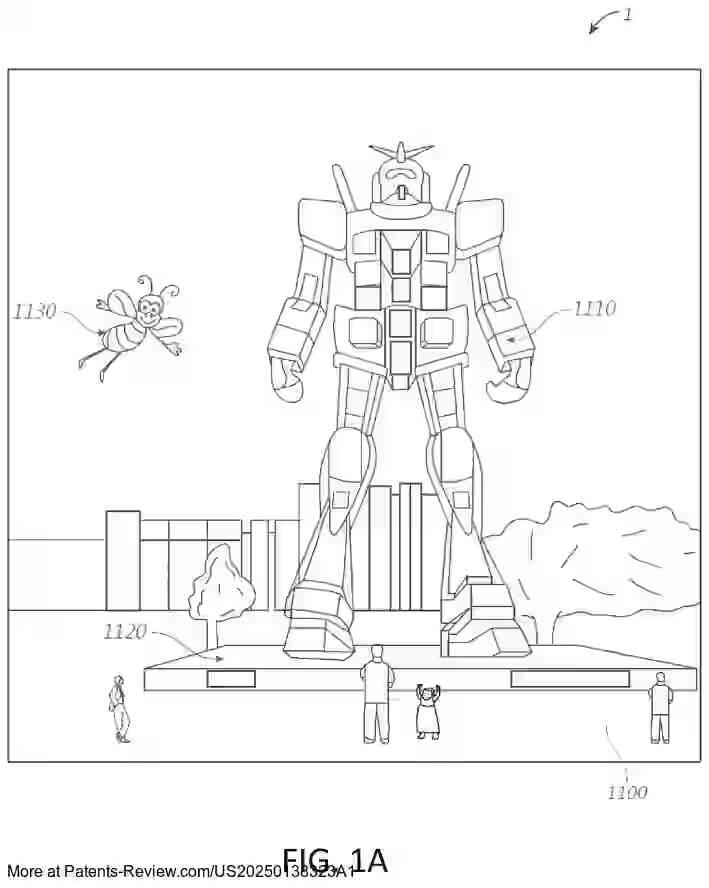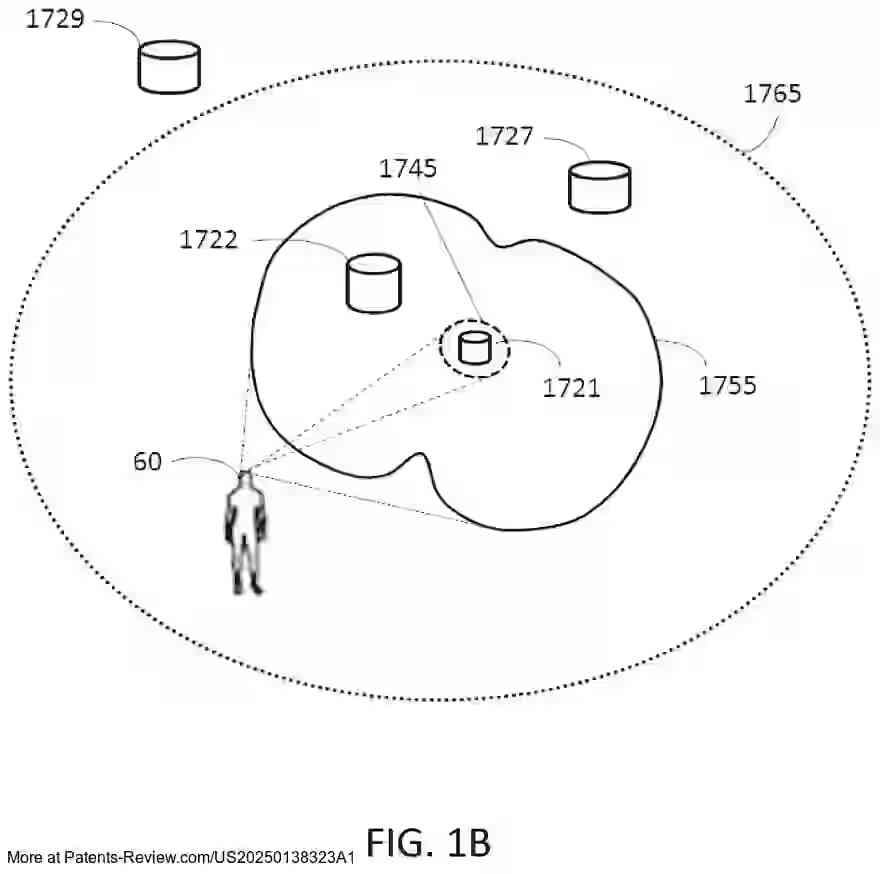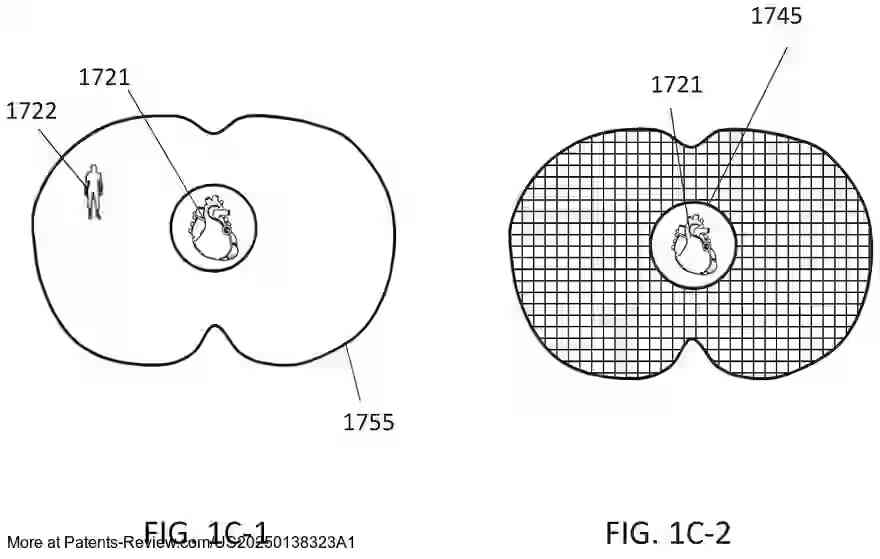IMAGING MODIFICATION, DISPLAY AND VISUALIZATION USING AUGMENTED AND VIRTUAL REALITY EYEWEAR
US20250138323
2025-05-01
Physics
G02B27/0172
Inventors:
Applicant:
Drawings (4 of 28)




Smart overview of the Invention
A sophisticated display system is designed to enhance user interaction with augmented reality (AR) and virtual reality (VR) environments through head-mounted displays. These systems project light into the user's eye, displaying AR content while integrating real-world elements. The system employs both user and environmental sensors to perceive the user's focus and surroundings, enabling the alteration of perception of objects within the user's field of vision based on user intent and situational context.
System Components
The display system comprises several key components:
- Head-Mounted Display: Projects AR content into the user's vision field with varying divergences to simulate different distances.
- Environmental Sensors: Detect surroundings and include devices such as depth sensors, cameras, and GPS units.
- User Sensors: Monitor user actions and focus, potentially using cameras.
- Processing Electronics: Communicate with sensors and displays to modify user perception based on focus and intent.
Functionality
The processing electronics are pivotal in adjusting the user's perception by enhancing or de-emphasizing real or virtual objects. Alterations can involve changing an object's location within the vision field, modifying visual attributes like contrast or brightness, or even adjusting background features to influence object prominence. The system can also provide alerts, both visual and auditory, to enhance user awareness.
Advanced Features
The display system is equipped to handle complex scenarios such as driving, where it can modify perceptions based on driving records or sensor data like radio signals. It can highlight objects by superimposing transparent colors or altering backgrounds to reduce distractions. These features ensure a seamless integration of virtual elements with real-world contexts, enhancing user experience.
Technical Specifications
The system utilizes waveguides with diffractive optical elements for light projection, allowing for precise control over image presentation. It supports multiple configurations for altering object perception, including moving objects between peripheral and central vision regions. Light sources within the system direct light into waveguides to form images in the eye, ensuring clarity and immersion in AR environments.